When it comes to crop protection it is really important to get your timings right. Applying products at the right and the optimum time improves efficiency.
It is also important to avoid applying a product at a time when it could damage the plant and, of course, when it is not legal to do so. All products have a label which states the times at which they can be applied.
Most manufacturers will state a growth stage on the label of the product which is the optimum timing at which the product should be applied. The label will also state the earliest and latest timings at which a product can be applied. The latest application timing for some products might be a number of days before harvest or a specific date.
However, when we are talking about applying at the optimum timing, we refer to growth stages. Applying at the correct growth stages can result in lower rates being used as disease, for example, may be prevented rather than cured.
In the case of plant growth regulators if the timing is too early or a little late then it may not be as effective.
Growth stages of plants can be hard to identify. In Ireland, we generally follow a system called Zadock’s code and this goes from growth stage (GS) 0 to GS100.
However, we only need to focus in on some of these growth stages for optimum timings.
For example, CeCeCe (a plant growth regulator) should not be applied after GS32. Terpal (another plant growth regulator) works best when the flag leaf is emerging and should not be applied after GS41.
If you look at some of the sulphonyl urea herbicides most cannot be applied after GS39, which is flag leaf emerged.
In recent years, advice from Teagasc is to apply the final fungicide on spring barley at the paint brush stage, when the awns are emerging at GS49.
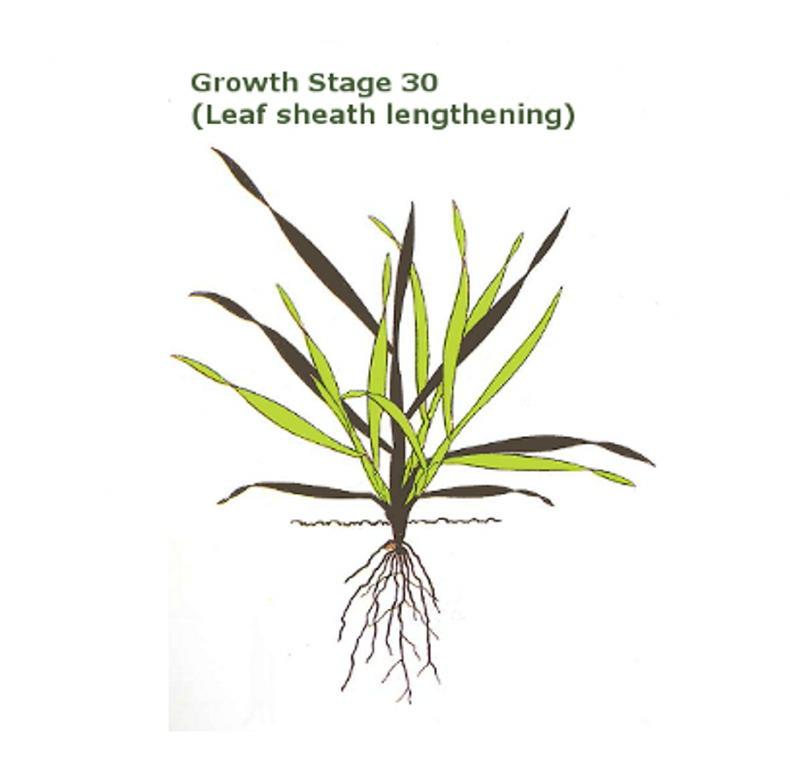
The plant is about to start to stretch upwards at GS30. \ Teagasc
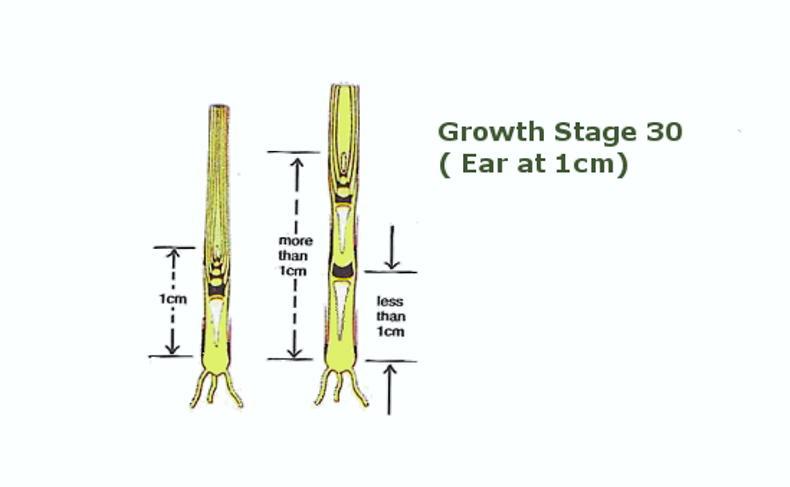
There is 1cm or more between where the lower leaves are attached to the stem to the shoot apex. The internode is less than 1cm. \ Teagasc
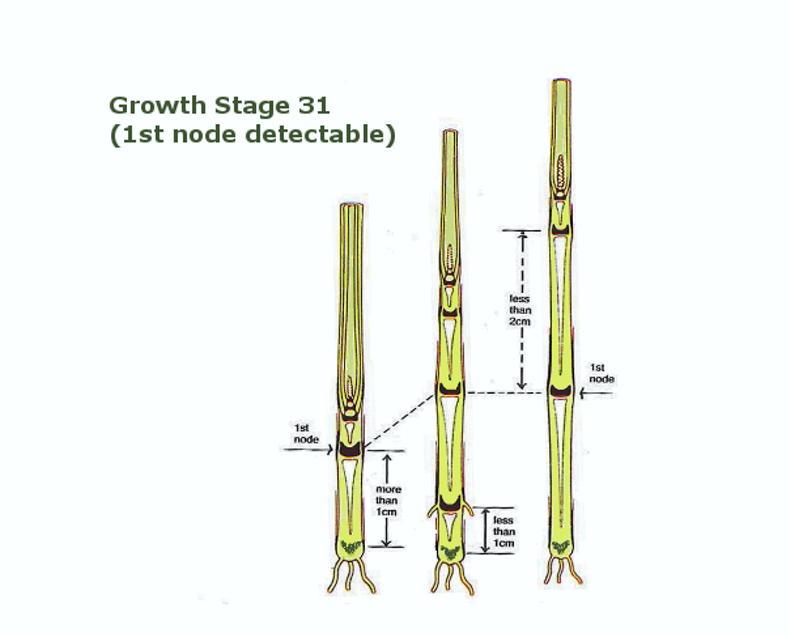
At GS31 an internode is 1cm or more, but the internode above that is less than 2cm. \ Teagasc
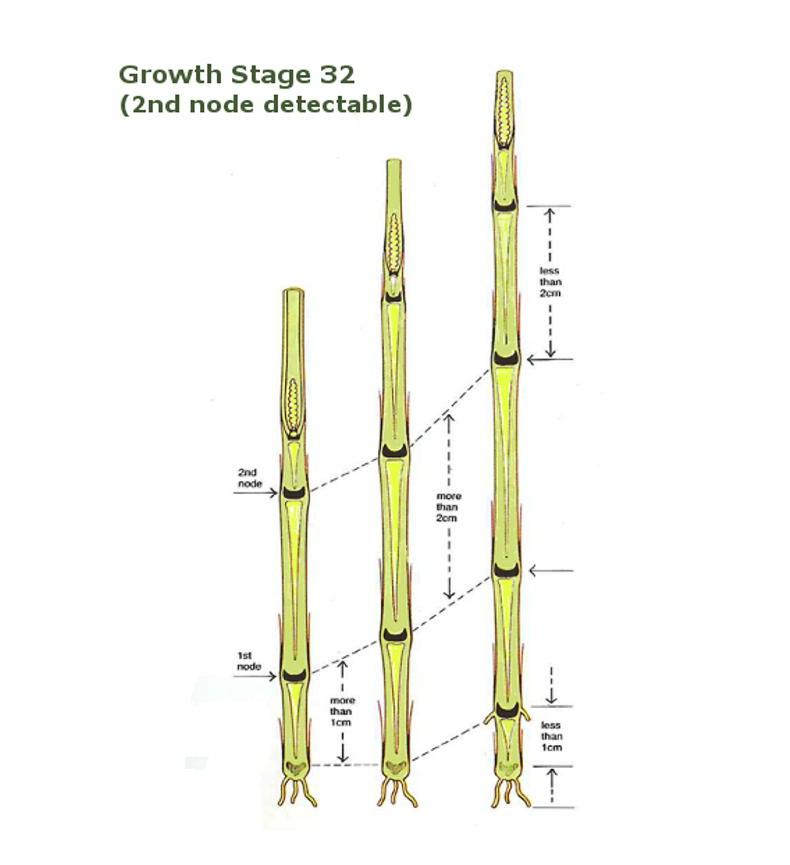
Follow the diagram for GS32. There a number of different scenarios. \ Teagasc
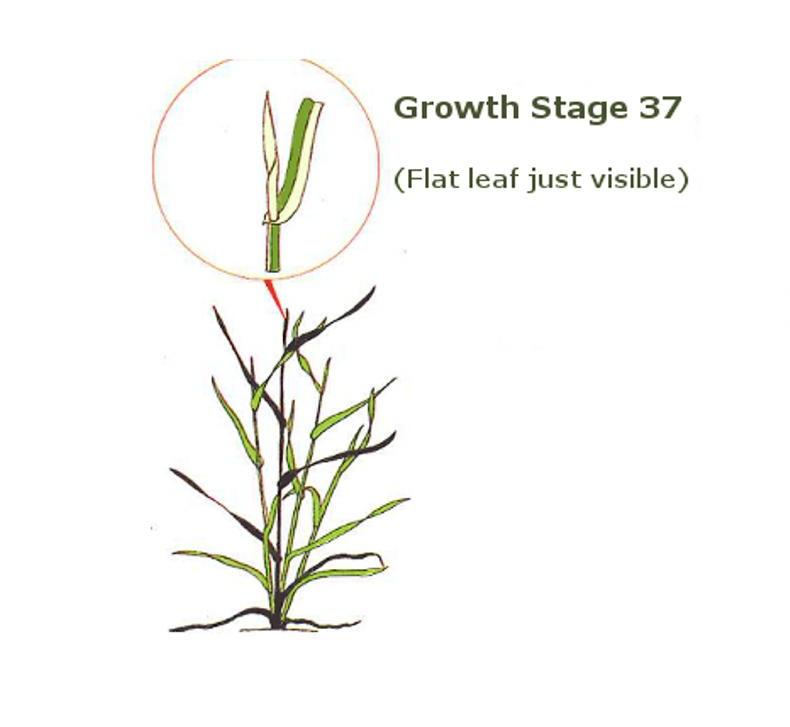
At GS37 the flag leaf is emerging. \ Teagasc
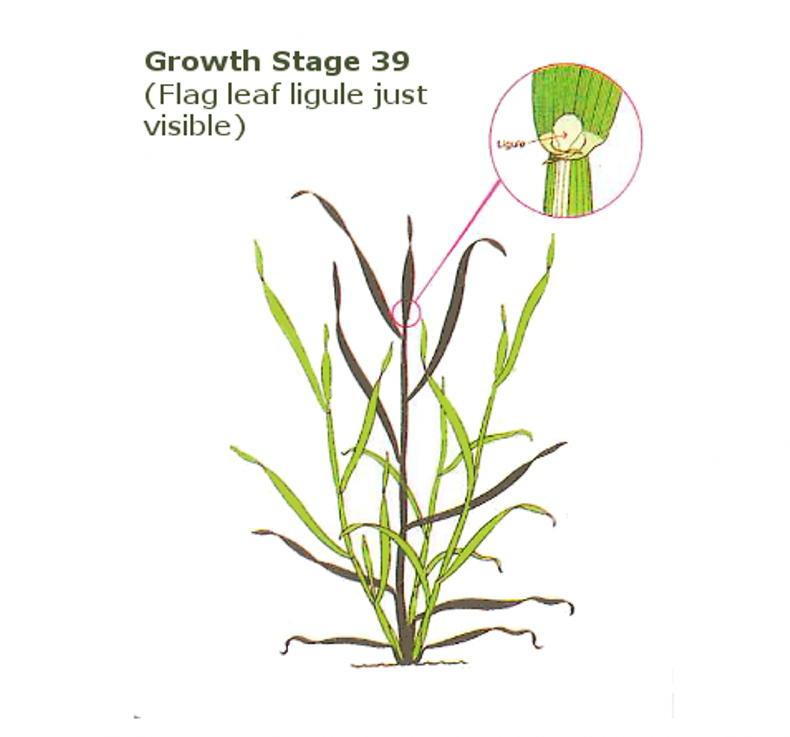
At GS39 the flag leaf had emerged and the ligule is visible. \ Teagasc
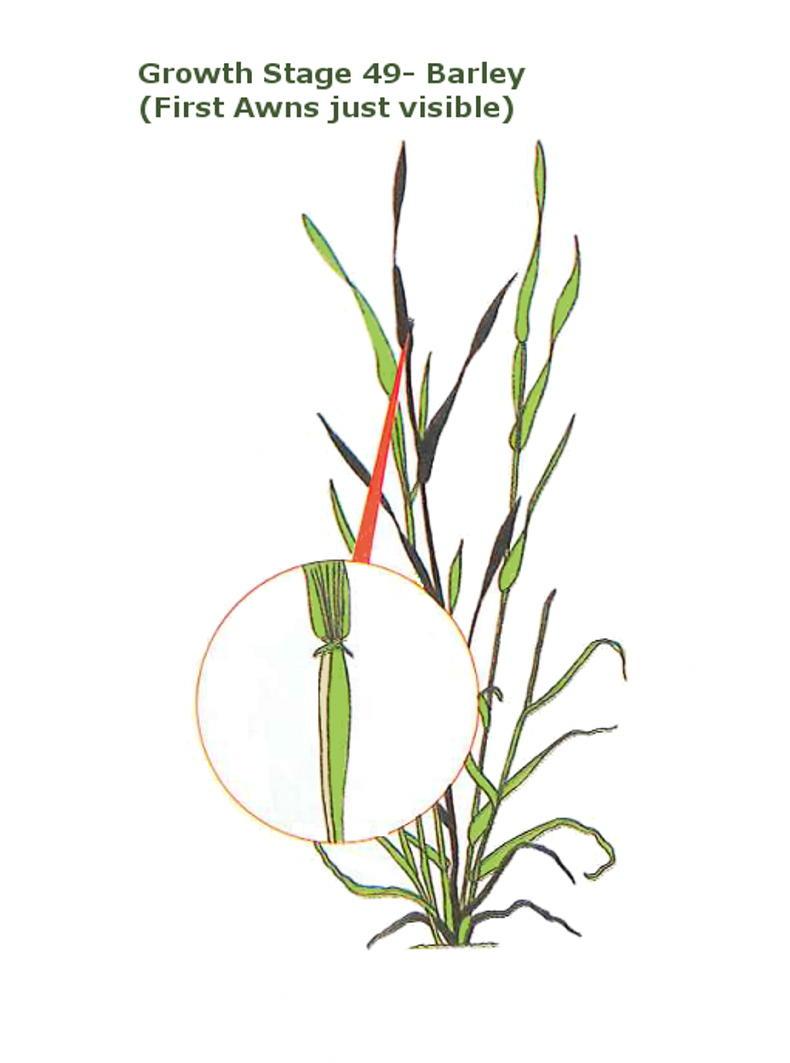
At GS49 the awns are peeping and are just visible. \ Teagasc
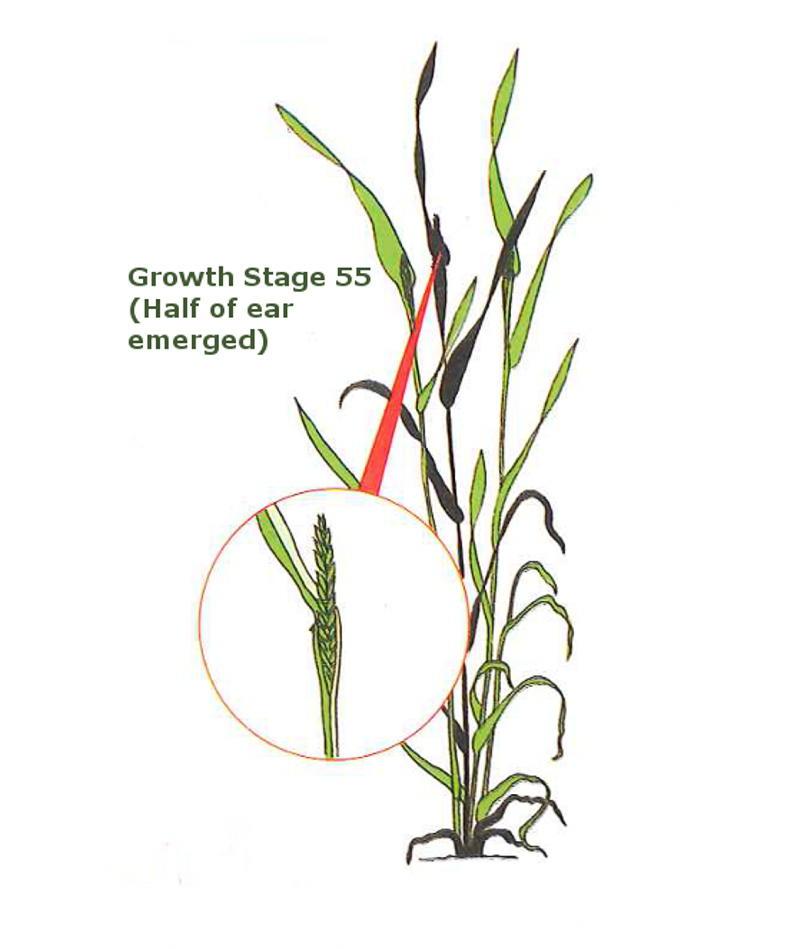
At GS55 the head is half emerged. \ Teagasc
Identifying growth stages
The images featured here explain how to identify some of the key growth stages. Some are easier to identify than others. For example, at GS49 you can see the awns beginning to emerge. At GS39 you can peel back the leaves to make sure it is the flag or top leaf and there will be no other leaves coming through its base. The most difficult growth stages to identify are probably GS30-32.
At these stages you will need to cut the stem of the plant in the middle to open up the stem and allow you to examine the distances between the different plant nodes. A ruler will come in handy here as well to check the distances.
When it comes to crop protection it is really important to get your timings right. Applying products at the right and the optimum time improves efficiency.
It is also important to avoid applying a product at a time when it could damage the plant and, of course, when it is not legal to do so. All products have a label which states the times at which they can be applied.
Most manufacturers will state a growth stage on the label of the product which is the optimum timing at which the product should be applied. The label will also state the earliest and latest timings at which a product can be applied. The latest application timing for some products might be a number of days before harvest or a specific date.
However, when we are talking about applying at the optimum timing, we refer to growth stages. Applying at the correct growth stages can result in lower rates being used as disease, for example, may be prevented rather than cured.
In the case of plant growth regulators if the timing is too early or a little late then it may not be as effective.
Growth stages of plants can be hard to identify. In Ireland, we generally follow a system called Zadock’s code and this goes from growth stage (GS) 0 to GS100.
However, we only need to focus in on some of these growth stages for optimum timings.
For example, CeCeCe (a plant growth regulator) should not be applied after GS32. Terpal (another plant growth regulator) works best when the flag leaf is emerging and should not be applied after GS41.
If you look at some of the sulphonyl urea herbicides most cannot be applied after GS39, which is flag leaf emerged.
In recent years, advice from Teagasc is to apply the final fungicide on spring barley at the paint brush stage, when the awns are emerging at GS49.

The plant is about to start to stretch upwards at GS30. \ Teagasc

There is 1cm or more between where the lower leaves are attached to the stem to the shoot apex. The internode is less than 1cm. \ Teagasc

At GS31 an internode is 1cm or more, but the internode above that is less than 2cm. \ Teagasc

Follow the diagram for GS32. There a number of different scenarios. \ Teagasc

At GS37 the flag leaf is emerging. \ Teagasc

At GS39 the flag leaf had emerged and the ligule is visible. \ Teagasc

At GS49 the awns are peeping and are just visible. \ Teagasc

At GS55 the head is half emerged. \ Teagasc
Identifying growth stages
The images featured here explain how to identify some of the key growth stages. Some are easier to identify than others. For example, at GS49 you can see the awns beginning to emerge. At GS39 you can peel back the leaves to make sure it is the flag or top leaf and there will be no other leaves coming through its base. The most difficult growth stages to identify are probably GS30-32.
At these stages you will need to cut the stem of the plant in the middle to open up the stem and allow you to examine the distances between the different plant nodes. A ruler will come in handy here as well to check the distances.















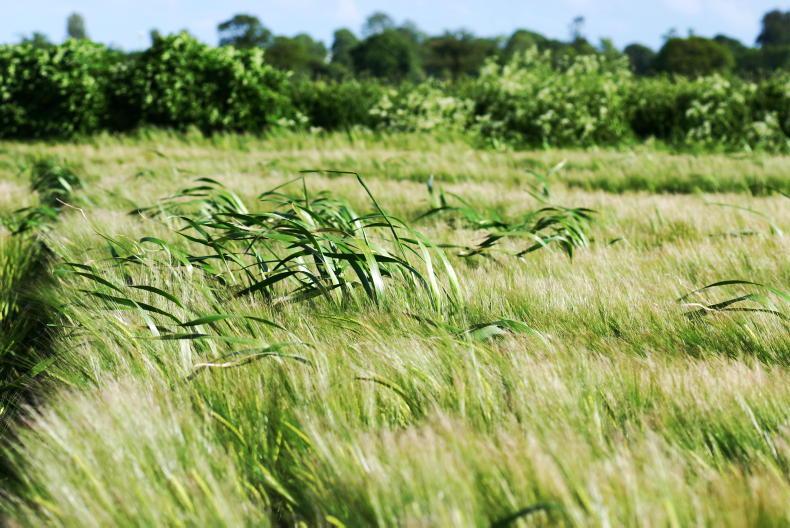

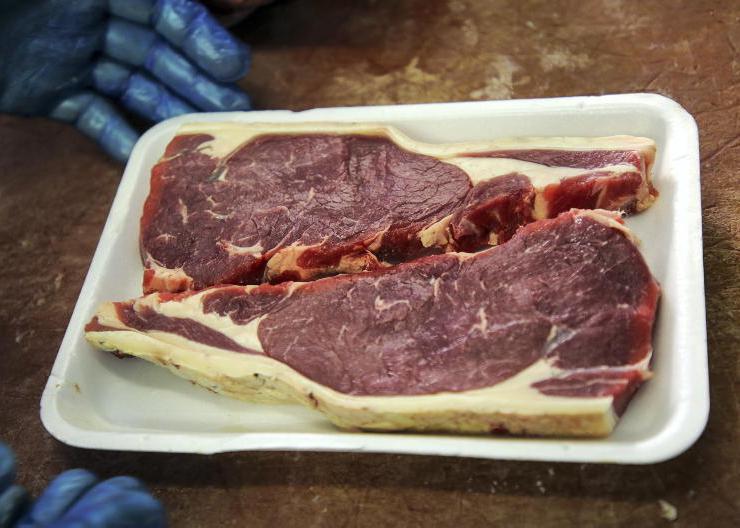
SHARING OPTIONS